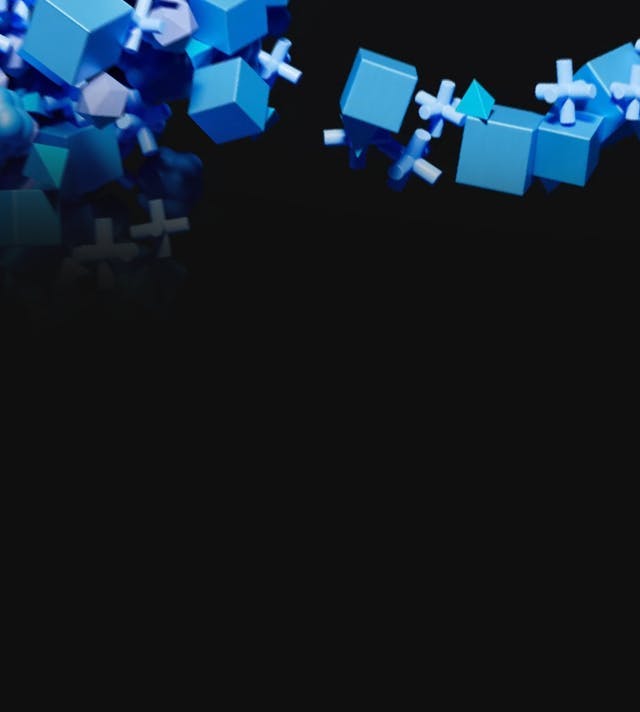
Software Engineer
Basic Interview Q&A
1. Mention some challenges of software development.
This is an important software engineering interview question that is often asked in interviews. Some of the software development challenges are:
- The rapid advancement of technology: Technology evolves at a phenomenal pace, thus, exerting pressure on software developers to learn and adapt to maintain competitiveness.
- Increasing demands of customers: Different customers have different needs. Software developers must understand the business concept to understand the software requirements of the customers.
- Time constraints: Software developers need to work under strict time deadlines. For remote software developers, the challenge is even bigger as they straddle timezones. Time constraints can reduce the efficiency of software developers and end in mediocre quality software products.
- Limited resources: Many software development companies still struggle with a lack of IT resources such as high-performing software development tools, robust computing platforms, incompetent data storage, and inefficient network capabilities. All these can reduce the overall efficiency and performance of the software development team.
- Disagreements with software testing teams: Software development and software testing teams are often at loggerheads with each other. Major reasons for the same are the difference in team mindsets and job roles, the opposite nature of development and testing, and high work and performance pressure.
- Coping with legacy systems: Many organizations still run with older legacy systems and this can raise the risk of security, inefficiency, and lack of technological compatibility. Thus, the modernization of legacy software is a pressing need.
- Heterogeneity challenge: Since customer demands evolve constantly, an advanced challenge in software development is to create flexible and dependable software that can adapt to changing and future needs.
2. Mention the limitations of the RAD model.
The limitations of the RAD model are:
- This model has a sufficiently high requirement of human resources to build the required number of teams.
- The system does not work if the developers and users don’t stay committed.
- If the system is not correctly modularized, it may lead to problems in building components.
- If the technical risk is high, this model is not applicable.
When answering software development interview questions about the limitations of certain models, you can also talk about times when you faced such limitations and how you coped with them.
3. What are the steps involved in software development?
The following steps are needed for software development:
- Brainstorming and planning: This stage determines the purpose and functions for which the software program must be developed.
- Project team analysis: This stage determines the team members, tools, and time frame required for the project.
- Design stage: At this stage, the designated software development team designs the program.
- Development stage: This is the stage where the final functionality of the software is developed.
- Quality assurance and testing: This is the penultimate, but perhaps the most important stage before finally launching the program. Here, any bugs, defects, or errors are identified and rectified.
- Launch: This is when the program is finally installed and launched for the intended users.
4. Mention the benefits of Smoke-testing.
Some of the benefits of Smoke-testing are listed below:
- It minimizes the risk of integration
- It improves the end-product quality
- It simplifies the diagnosis and correction of errors
- It makes assessing progress easy
5. Talk about equivalence partitioning.
Equivalence partitioning is a method for testing software where the input data of a software unit is divided into partitions containing equivalent data. These partitions help in deriving the test cases, which, in principle, must cover each partition at least once. Through partitioning, the test cases can detect classes of errors, and hence reduce the number of test cases to be developed. Since the number of test cases reduces, the time required for software testing reduces too. Though this method is usually applied to a tested component’s inputs, in some rare cases it could also be applied to the outputs.
6. Differentiate between alpha and beta testing.
These are two types of acceptance tests.
- Alpha test: Alpha tests are tests where the customer assesses a full-version software under the developer’s supervision. This kind of testing happens at the developer’s site.
- Beta test: Beta tests are tests where the customer assesses a version of the software without the developer’s supervision. This kind of testing happens at the customer’s site.
7. Mention the types of static testing tools.
The three types of static testing tools are:
- Code-based: For these testing tools, the source code functions as the input and they use that to generate the test cases.
- Specialized: In these testing tools, the language is used to write detailed test specifications for every test case.
- Requirement-based: These testing tools design the test cases as per the user requirements.
For such a question in the software developer interview, remember to add instances from personal experience.
8. Mention the different types of software maintenance.
The different types of software maintenance are as follows:
- Corrective: Corrective maintenance is used for correcting the faults in the software.
- Adaptive: Adaptive maintenance helps the software to adapt to changes in its environment.
- Perfective: Perfective maintenance helps in changing or improving the system to meet the new requirements.
- Preventive: Preventive maintenance refers to the alterations made to enhance future maintainability.
9. What are the software engineering categories?
The categories of software engineering include:
- Scientific software: This software provides an engineering solution for specific engineering tasks. Examples include CAM and CAD software, AutoCAD, etc.
- Embedded software: This refers to software used in control and instrumentation appliances such as televisions, satellites, and washing machines.
- AI software: These types of software are designed for pattern recognition, advanced systems, and artificial neural software used in machine learning algorithms and natural language processing.
- Networking and web development software: This provides a medium in communication between computer systems, software, and data storage systems. Examples include web browsers, email clients, and file transfer protocol (FTP) software.
- System software: This category includes software that provides the core functionality for other digital applications. Examples include operating systems like Windows and Linux, device drivers, and utility programs.
10. How would you define a framework?
A framework is a platform for developing and deploying software. It outlines how software components relate to one another and details the development process. It is a structured and standardized set of tools, libraries, and components that provide a foundation for building software applications.
Frameworks are designed to facilitate the development, maintenance, and scalability of applications by offering a pre-built structure for organizing code, handling common tasks, and interacting with other systems.
11. Differentiate between computer software and a computer program.
A computer program is a subset of computer software. A computer program contains programming instructions to carry out tasks, while computer software is a collection of computer programs.
Computer software might contain programs, libraries, APIs, components, and frameworks. It is a broad term encompassing any software designed to run on a computer system, including operating systems, application software, utilities, device drivers, and system softwares.
On the other hand, a computer program is a set of instructions written in a specific programming language and executed by a computer. It can be a single application or a group of related applications that perform a specific function or set of functions.
12. What is the full meaning of SDLC?
SDLC stands for Software Development Life Cycle. It is a structured approach to software development that involves various stages and activities, from planning and analysis to implementation and maintenance. The process enables the creation of high-quality software within the shortest possible time frame.
13. List different SDLC models.
Software Development Life Cycle (SDLC) is a planned methodology of building software to ensure quality and reliability in the software built. Here is a list of some popular SDLC models:
Waterfall model: In this SDLC model, the entire process is divided into various phases where the outcome of one phase becomes the input of the next phase.
Incremental model: It is a series of separate SDLC cycles where requirements are grouped and addressed in each cycle.
V-model: It plans the phases in parallel with verification phases on the left side and validation phases on the right side of the V-shaped diagram.
Agile Model: Agile development model promotes continuous collaboration between development and testing teams throughout the development process.
14. What is debugging?
Debugging is the process of identifying and resolving defects, errors, and faults in software applications. A bug is an error or fault in a software application that causes it to behave unexpectedly or incorrectly. Debugging begins soon after the software code is written and continues through the subsequent stages of software development. The goal is to create a defect-free or error-free software product for market release.
15. What is the Waterfall method?
The Waterfall approach is a linear and consecutive downward development SDLC approach. In this methodology, the customer and stakeholder requirements are collected at the beginning of the project.
After that, a sequential project plan covers all those requirements. And, hence the Waterfall method is so named as each phase of the project downpours into the next like a waterfall.
16. What are some use cases of SDLC?
SDLC is useful in various scenarios, including:
- Developing new software applications or systems from scratch
- Updating or modifying existing software
- Maintaining software and ensuring its longevity
- Ensuring software quality and reducing the risk of defects
- Managing and controlling project timelines and costs
17. What is software engineering?
Software engineering is a branch of engineering that focuses on developing and maintaining high-quality software systems. It involves applying engineering principles and methods to design, develop, test, deploy, and maintain software. Software engineering plays a vital role in the current digital age, where software systems are a ubiquitous part of our daily lives, from smartphones to cars, healthcare systems to financial services.
Software engineering involves a range of activities, such as requirements gathering, software design, coding, testing, documentation, and project management. Effective software engineering involves not only technical skills but also collaboration, communication, and problem-solving. Software engineers work with other professionals such as product managers, designers, and quality assurance teams to deliver high-quality software systems that meet user needs.
18. What are the targeted accomplishments of a software engineering model?
A software engineering model is designed to achieve several objectives, including:
Providing a framework for software development: A model helps in creating a systematic approach to software development, which can be used to plan, design, develop, test and maintain software.
Enhancing software quality: A software engineering model helps in identifying and addressing software quality issues early in the development process, which helps in reducing the cost of development and maintenance, and ensures that the software meets the desired standards of quality.
Improving communication: A model provides a common language and understanding between software developers, managers, and stakeholders, which helps in improving communication and collaboration throughout the development process.
Facilitating project management: A model helps in managing the development process by providing a clear roadmap of activities, roles, and responsibilities, which helps in ensuring that the project is completed on time, within budget, and with the desired quality.
Enabling software reuse: An engineering mode also promotes the reuse of software components, which helps in reducing the time and cost of development and ensures consistency and quality across projects.
19. What are internal milestones in software engineering?
Internal milestones are measurable and important attributes of processes. They are standard systematic procedures that indicate that the engineers are on the right path. These milestones can be used to assess the development team's progress, identify issues and risks, and make necessary adjustments to the project plan. They can be related to various aspects of the project, such as completing a specific feature, testing and debugging the code, or reaching a certain level of performance or functionality.
20. Mention some characteristics of software.
Software exhibits various characteristics that make it a unique product in the market. Some of the most notable features include tailor-made design to fit specific user requirements, usability, functionality, maintainability, and reliability. These characteristics are essential to ensure that the software performs as intended, is user-friendly, can be easily updated and repaired, and functions without failure or errors.
21. What is a software process?
A software process refers to a set of systematic activities and procedures that enable the development and maintenance of software applications. The key activities typically included in a software process are requirements gathering, design, implementation, testing, and maintenance. These activities provide a framework for managing the entire software development life cycle.The software process can be customized to suit the specific requirements of a project or organization, and it can be refined and improved over time to optimize performance and efficiency.
22. What are the factors to be taken into account during the construction of a system model?
System models are useful tools for understanding complex systems and identifying areas for improvement. When constructing a system model, there are several elements to consider, including:
- Preferences: This refer to the goals or objectives that the system is designed to achieve.
- Assumptions: These are the underlying beliefs or ideas about how the system works.
- Limitations: These factors can constrain the system, such as time or resources.
- Constraints: These are the specific conditions that the system must operate under, such as legal or regulatory requirements.
By considering these elements, developers and stakeholders can ensure that the model accurately reflects the system and can be used to make informed decisions about improvements or changes.
23. List some project management tools used in software engineering.
Software engineering project management involves a variety of tools, including Jira, Trello, Asana, and more. These tools offer features such as task assignment, progress tracking, Gantt charts, team collaboration, and resource allocation. Other useful project management tools for software engineering include Agile methodologies, Scrum boards, and Kanban boards.
24. What is the Rapid Application Development (RAD) model?
The RAD model is an iterative and prototyping approach to software development that emphasizes less time spent on traditional planning phases and more on software development. It involves a series of smaller development cycles, including planning, design, construction, and testing, with a focus on quick delivery of functional software to clients and stakeholders. The RAD model incorporates feedback from end-users and stakeholders to refine and improve the software.
25. What are the different phases of SDLC?
The Software Development Life Cycle (SDLC) consists of several phases that depend on the project's requirements, but the typical phases are:
Requirement Gathering: Gathering information from stakeholders and defining the scope of the project.
System Analysis and Design: Analyzing requirements and designing a system architecture that meets those requirements.
Coding: Implementing the design by writing code in a specific programming language.
Testing: Testing the software to ensure that it works as expected and meets the requirements.
Deployment and Maintenance: Deploying the software to production and maintaining it by fixing bugs, adding new features, and upgrading it over time.
26. What are some disadvantages of the classic life cycle model, also known as the Waterfall model?
The Waterfall model may not be the best choice for long or continuous projects due to the lack of certainty and high amount of risks involved. It may also present challenges for dynamic or complex projects, as well as those that are object-oriented.
27. Mention a few disadvantages of the incremental process model.
Some of the disadvantages include:
Complexity: As the number of increments increases, managing and coordinating multiple increments can become challenging.
Lack of overall planning: Since the project is divided into increments, the overall planning may be less detailed than other models. This may lead to difficulty in identifying dependencies and conflicts between increments.
Cost: The incremental model can be expensive as it requires constant testing and integration of different increments.
Time-consuming: The incremental model can be time-consuming as each increment requires design, development, testing, and integration phases. This can lead to longer project timelines.
Difficulty in accommodating changes: Changes to requirements or design in one increment can have a significant impact on subsequent increments, making it difficult to accommodate changes.
28. List some advantages of the incremental process model.
The advantages of the incremental process model include the following:
Incremental resource deployment: Instead of deploying all resources at once, they can be gradually introduced as the project progresses, reducing the risk of resource waste.
Low initial delivery cost: Since each iteration focuses on delivering a specific functionality, the initial delivery cost is relatively low
Ease of error recognition: With incremental development, errors are easier to recognize since each iteration is focused on a specific functionality. This means that developers can identify and address errors early on in the development process, reducing the risk of critical issues arising later on.
Offers more flexibility: By delivering working software in increments, developers can make changes as necessary, enabling them to respond quickly to changing requirements and stakeholder feedback.
Easily tested and debugged: Each iteration is focused on a specific functionality, making it easier to test and debug.
29. What are some disadvantages of the spiral model?
The spiral model is a software development process that involves repeated cycles of risk analysis, design, and development. Some disadvantages of this model are:
Costly: The spiral model can be expensive to implement due to the need for a high level of expertise in risk analysis and the potential for additional iterations.
Expertise required: The risk analysis involved in this model requires a high level of expertise, which can be challenging to find.
Not suited for small projects: The spiral model is best suited for large and complex projects, making it less suitable for smaller projects.
Critical risk analysis: The project's success depends heavily on the accuracy and effectiveness of the risk analysis, making it a critical factor for the success of the project.
30. What is a software scope?
In software development, the term software scope refers to the extent and boundaries of the software's features and functionalities that are defined during the planning stage of the project. It involves identifying what the software should do and what it should not do, which is critical to ensuring that the software meets the business requirements and user expectations.
The software scope includes various elements such as the project's budget, resource allocation, and time allocation.
31. What type of data is passed through the HTTP headers?
HTTP headers allow the client and server to pass additional information through the request or response. This information can include authentication credentials, data type specifications, cache instructions, connection details, and information about the client and server. Non-standard headers can also be used to pass custom data as needed
32. What are some advantages of evolutionary prototyping?
The advantages of this type of prototyping include the following:
Early and continuous feedback: With each iteration, stakeholders can provide feedback on the prototype, allowing the system to evolve and meet the project needs better.
Better risk management: The system is developed incrementally, so potential risks can be identified early and addressed before they become major issues.
Flexibility: The system can adapt to changing requirements, as each iteration allows for modifications and enhancements to be made.
Time and cost-effectiveness: The system can be developed and tested in smaller increments, reducing the overall development time and cost.
33. What are some disadvantages of evolutionary prototyping?
The disadvantages of evolutionary prototyping include the following:
Time-consuming: Evolutionary prototyping can be a time-consuming process because it involves multiple iterations, testing, and refinement.
Lack of structure: This approach does not have a well-defined structure, which can lead to the development of a system that lacks coherence and consistency.
Cost: Developing multiple prototypes can be expensive, particularly if the development team does not have a clear understanding of the project requirements.
Scope creep: The iterative nature of evolutionary prototyping can lead to scope creep, where additional features are added to the software without considering their impact on the overall project goals and timeline.
34. What is software prototyping?
Prototyping is an iterative process in which developers create a preliminary software application version to test its functionality, user interface, and other features. The prototype can gather feedback from stakeholders, identify potential design flaws, and refine the software development process.
35. How can project execution be measured?
Project execution can be measured by milestone checklists, activity monitoring, and status reports. These methods help project managers track the project's progress and identify any potential issues that may arise during the project execution. Additionally, they provide a clear picture of the project's status and allow stakeholders to make informed decisions based on the information provided by these methods.
36. What are some evolutionary process models?
Some of evolutionary models include:
- Prototype model
- Spiral model
- Incremental model
- Concurrent model
37. What are the different techniques in rapid prototyping?
The different types of rapid prototyping techniques include:
- Mockups & wireframes
- Automatic code generation
- 3D printing
- Rapid Application Development (RAD)
38. What is coupling?
Coupling in software engineering defines interdependence between two or more software modules. It shows how closely related or connected two modules are. High coupling can make a software system more difficult to maintain and modify, while low coupling can make it more modular, flexible, and easier to work with.
39. What is cohesion?
Cohesion indicates the bond strength between elements in a module. It measures the relationship strength between the data of a class/methods and the unifying factor or purpose the class serves. High cohesion means that the elements within a module are closely related and work together towards a common goal, while low cohesion implies that the elements are loosely related and do not have a clear or unified purpose.
40. What is Agile SDLC?
Agile software development life cycle is an iterative process of software development based on an adaptive and decision-making approach, using continuous design improvements to produce better software.
41. What are the different types of coupling in software engineering?
Listed below are the different types of coupling in software engineering:
- Stamp
- Data
- Content
- Common
- External
- Control
42. What are the different types of cohesion in software engineering?
The following are the different types of cohesion in software engineering:
- Sequential
- Functional
- Communicational
- Temporal
- Procedural
- Logical
- Coincidental
43. What are some advantages of cohesion?
Some of the advantages of cohesion include:
- Reduces complexity of modules
- Increases module reusability
- Improves system maintainability
- Improves testabilty
- Creates balance between coupling and unit complexity
44. What is a COCOMO model?
This is an acronym for Constructive Cost Model. COCOMO model is a procedural regression model that calculates the estimated effort, time, and cost required to develop the software.The model considers various factors such as the size of the project, complexity, required software reliability, team experience, and development environment to provide a reliable estimate of the software development effort.
45. How would you describe a state transition diagram?
A state transition diagram describes the various states an object can possess and the events under which such an object can transition. It consists of nodes, which represent the states, and directed edges, which represent the transitions. It is commonly used in software engineering to model the behavior of a software system or a specific module within a system.
46. Explain refactoring.
Refactoring is the process of optimizing the software system without changing the software’s functionality or code behavior. It is typically done to improve the code's readability, reduce complexity, remove duplication, and increase the code's overall quality. Refactoring is a common practice in software development and is often done to improve a codebase's long-term maintainability and scalability.
47. What is smoke testing?
Smoke testing is a preliminary software testing in which software is tested to reveal stability faults or failures. This is normally done to confirm the quality assurance team to proceed with the software testing. Smoke testing typically involves a set of simple and crucial tests that verify the basic features of the software, and any critical issues found during smoke testing are addressed before proceeding to more comprehensive testing.
48. What are the differences between tags and branches?
A tag is a pointer to a specific commit in Git history. Tags are generally used to mark a specific release or version of the codebase. Tags are immutable, meaning that they cannot be changed once created.
On the other hand, a branch is a parallel line of development in Git that allows developers to work on new features or make changes to the codebase without affecting the main codebase. Branches are mutable, which means they can be updated and modified as new commits are added.
49. In your opinion, which of testing frameworks is best for testing code quality?
There are several testing frameworks available that can help to test code quality, each with its own strengths and weaknesses. Here are some popular options:
JUnit: JUnit is a widely used testing framework for Java applications. It is designed to help developers write and run repeatable tests to ensure their code works as expected. JUnit can be used to test individual methods or entire classes, and it provides a variety of built-in assertion methods to help developers check the correctness of their code.
PyTest: PyTest is a popular testing framework for Python applications. It is designed to be simple and easy to use while also providing powerful features for testing complex systems. PyTest supports a wide range of testing scenarios, including unit testing, functional testing, and integration testing.
NUnit: NUnit is a testing framework for .NET applications. It provides various tools for testing different types of applications, including desktop applications, web applications, and mobile applications. NUnit supports a wide range of testing scenarios, including unit testing, integration testing, and acceptance testing.
Mocha: Mocha is a testing framework for JavaScript applications. It provides a simple, flexible syntax for writing tests and supports synchronous and asynchronous testing scenarios. Mocha can be used to test a variety of JavaScript frameworks and libraries, including Node.js, React, and Angular.
50. What is software architecture?
Software architecture is the design and structure of a software system, including its components, relationships, and principles. Examples of software architecture include layered, client-server, or microservices. It serves as a blueprint for the development, deployment, and maintenance of the system and is crucial for ensuring scalability, maintainability, and reliability.
51. List the methods used for determining the size of a software product.
Some of the methods that can be used to determine the size of software are:
Function points: It is a method that measures the functionality provided by the software product based on user requirements.
Delivered code: It measures the size of the code delivered as part of the software product.
Lines of Code (LOC): This method involves counting the total number of lines of code written to develop the software product.
Story Points (SP): This method involves estimating the size of the software product based on the complexity of its features and user stories.
52. What does the acronym CASE stand for?
CASE stands for Computer-Aided Software Engineering. It uses computer-based tools and techniques to aid in software development. These tools can assist developers in analyzing, designing, coding, testing, and maintaining software systems.
53. What are function points?
Function points are important features that can be used to quantify the functionality provided by the software product. Function points are calculated based on various factors, such as inputs, outputs, inquiries, files, and interfaces, which are assessed to determine the size and complexity of the software.
54. How would you differentiate between Queue and Stack?
The main difference between a queue and a stack is their principle of operation. A queue is a data structure that works on the principle of First-In-First-Out (FIFO), which means that the element that is inserted first is the first one to be removed. On the other hand, a stack is a data structure that works on the principle of Last-In-First-Out (LIFO), which means that the element that is inserted last is the first one to be removed.
In a queue, elements are inserted at the rear end and removed from the front end. In contrast, in a stack, elements are inserted at the top and removed from the top. Another key difference is that queues are used for breadth-first search and sequential processing, whereas stacks are used for depth-first search, recursive programming, and backtracking.
Wrapping up
This content is catered towards software developers applying for engineering roles and technical recruiters looking to hire software engineers. It will help software engineers prepare for their next interview using the latest software engineering interview questions and answers.
On the other hand, it gives the technical recruiters a deep insight into the useful questions for evaluating each software engineering candidate. For a better alternative, technical recruiters can opt for an easier and more convenient way of hiring the world’s best remote software engineers via Turing. Also, software engineers can sign up with Turing, pass technical tests and interviews, and get matched with top U.S. companies.
Hire Silicon Valley-caliber Software Engineer developers at half the cost
Turing helps companies match with top quality remote JavaScript developers from across the world in a matter of days. Scale your engineering team with pre-vetted JavaScript developers at the push of a buttton.
Tired of interviewing candidates to find the best developers?
Hire top vetted developers within 4 days.
Leading enterprises, startups, and more have trusted Turing

Check out more interview questions
Hire remote developers
Tell us the skills you need and we'll find the best developer for you in days, not weeks.





